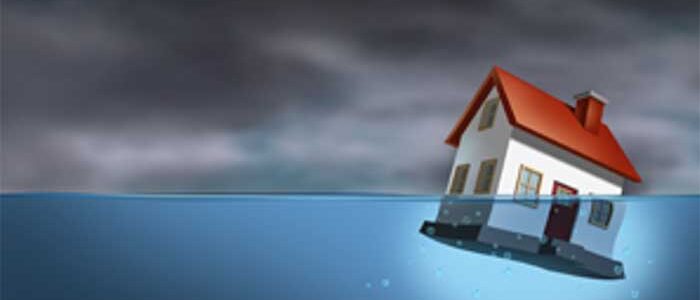Locusts, blood, darkness … While Floridians don’t exactly have to deal with the same plagues faced by the Ancient Egyptians, Florida’s unique environment presents homeowners with their own set of challenges.
What modern day plagues do Florida homeowners face and what can we do to protect our homes and families against them?
Plague #1: Flooding
For Floridians, summer months are often associated with afternoon rainstorms. Over time, these heavy rains can cause flooding, especially in low-elevation and coastal regions. The water probably won’t turn to blood like in Ancient Egypt, but it can certainly darken as clogged storm drains cause dirt and debris to float through your neighborhood.
How to Protect Your Home: Floodsmart.gov recommends taking the following steps to prepare your home for a flood:
- Clear debris from gutters and downspouts
- Anchor fuel tanks
- Elevate all electrical components (switches, sockets, circuit breakers, wiring) and appliances at least one foot above your home’s estimated flood elevation
- Move furniture, valuables and other important documents to a safe, secure place
- .
Is your Florida home located in a flood zone? Click here to learn more about flood maps.
Plague #2: Bufo Toads
Originally brought to Florida to help eliminate pests in sugar cane fields, Bufo toads are usually found in yards where pets run around freely. These exotic amphibians are highly poisonous and deadly to pets and even small children if the secreted toxin comes in contact with the mouth.
How to Protect Your Home: Watch small children carefully while they are in the backyard to prevent the risk of them touching a Bufo toad or other dangerous item, and then putting their hands in their mouth. Don’t keep pet food outside – it attracts Bufo toads as well as other bothersome animals and pests.
Plague #3: Termites
Termites are pesky wood-destroying insects that cause damage to both structural and non-structural timbers of a home. The most common species of damage-causing termites found in Florida are Drywood termites and Subterranean termites.
In addition, there are a variety of termite species that are unique to Florida, including the Asian subterranean termite, the Nose termite and the Florida Dampwood termite.
Common Signs of Termite Damage:
- Discolored or sagging sheetrock on ceilings or walls
- Buckling or sagging floors
- Loose tiles
- Hardwood floor slats that pop up
- Bubbling or sagging laminate flooring
- Tiny pinpoint holes in the drywall
- Bubbling or peeling paint
- Wood that crumbles easily
- Jammed doors or windows
- Wood that sounds hollow when tapped
How to Protect Your Home: Have a qualified expert inspect your home for termites on a regular basis, usually once a year. Consult with a pest control what conditions in your home may be promoting termite activity. Determine what treatments will be most effective in preventing termites based on your home’s construction and signs of nearby activity.
Plague #4: Lovebugs
One of the most annoying pests to plague Florida is the lovebug. If you’ve ever driven on the highway during lovebug season, you know exactly what we mean…
Unfortunately for Floridians, lovebug season is about to begin… lovebug flights typically occur in the spring and fall, between April and September. Since lovebug pairs are weak fliers, they tend to stay near emergence sites when there is little or no wind, and are most abundant in moist, grassy habitats.
Legend has it that the explosive appearance of lovebugs in Florida is the result of a genetic engineering experiment gone awry at the University of Florida. Is this story true or just a myth? Take a look .
How to Protect Your Home: While these pesky creatures are not necessarily harmful to our homes, or us we can all agree that they are quite a nuisance, especially during summer months spent outside. To prevent lovebugs from invading your home or backyard barbecue, you can add screens to windows and doors, or use an exterior fan.
Plague #5: Wild Animals
From forest areas to swamplands, Florida’s diverse landscape creates the perfect environment for a vast array of wild animals. Unfortunately, many Florida homes are in close proximity to these wild animal habitats. Alligators, deer, and even Florida panthers have been spotted roaming around backyards and residential neighborhoods throughout the state.
How to Protect Your Home: To prevent wild and potentially dangerous animals from crashing your next barbecue, install a fence around the perimeter of your backyard, and don’t leave food sitting outside for extended periods of time.
Plague #6: Fire
Florida thunderstorms can ignite homes and other structures within seconds; resulting in catastrophic damage and personal loss. Every year, lightning starts approximately 4,400 house fires, costing an average of $283 million in damages.
How to Protect Your Home: Reduce the likelihood of a lightning strike igniting your home on fire by installing lightning rods. While lightning rods don’t reduce the chance of your home being struck by lightning, they do provide a path for lightning to reach the ground without causing a fire in the process.
Plague #7: Hurricanes
Capable of creating strong-force winds, tornadoes, heavy rain and flooding, hurricanes are one of the most severe “plagues” to strike Florida, causing catastrophic damage to homes along coastlines and hundreds of miles inland.
How to Protect Your Home: With the start of the 2021 hurricane season just around the corner, now’s the time to start thinking about how you can protect your home against high winds, potential flooding and debris damage. Take a look at our top hurricane preparation tips.
Plague #8: Bedbugs
Bedbugs are considered one of the leading hotel fears of the 21st century. But what happens when these pests enter your home? Bedbugs typically hide in mattresses, box springs, bed frames and headboards, and over time may scatter throughout the bedroom and nearby rooms.
How to Protect Your Home: If bedbugs do invade your home, WebMD recommends the following treatments:
- Clean bedding, linens, curtains and clothing in hot water and dry on the highest setting
- Using a stiff brush, scrub mattress seams
- Vacuum the bed and surrounding area frequently
- Enclose the mattress and box spring in a tight, zippered cover to prevent bedbugs from entering or escaping
- Get rid of clutter (or bedbug hiding places) around the bed
Plague #9: Burglary
According to the Florida Department of Law Enforcement, one burglary occurs ever three minutes in Florida. Home burglaries can seriously “plague” a home, resulting in property damage and loss, injuries and sometimes even death.
How to Protect Your Home: In addition to installing a security system, there are several precautions homeowners can take to defend their home against burglary and break-ins. Click here to view our top tips.
Plague #10: Toxic Mold
Florida homes are especially prone to mold growth due to our humid climate. While the presence of mold in the air is nothing to be concerned with, it is important to prevent mold from growing indoors. Excessive exposure to mold can lead to health problems such as allergies, irritant effects, infection and toxic effects.
How to Protect Your Home: According to FEMA.gov , the best and easiest way to prevent mold growth in your home is keeping it clean and dry. Without water and moisture, mold cannot grow.
They also recommend the following prevention tips:
- Stop the water – Repair all leaks. Seal cracks in walls and around windows.
- Disinfect it – Clean moisture-prone areas regularly with 10% solution of bleach.
- Keep it clean – Clean up and dry out building materials and carpets within 24 hours of a spill or flooding.
- Keep it dry – DO NOT carpet bathrooms or basements. Keep humidity levels below 60% and vent moisture from showers and cooking to the outside of your home.


